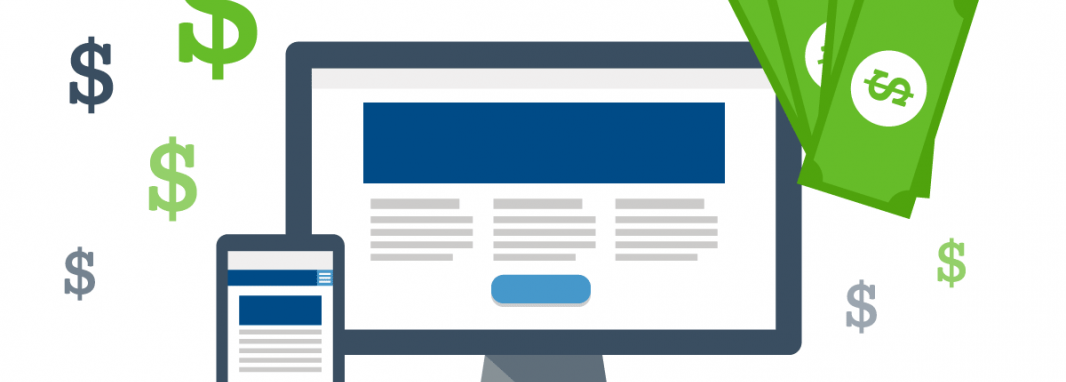How Much Does it Cost to Build a Multi-Vendor Marketplace Like Amazon
Amazon is an undisputed giant of the ecommerce game, setting the benchmark that every other company tries to live up to. Its reach and its strength are so great that few are brave enough to try to take them down completely. Instead, most people have their work cut out for them to just try to compete and stay relevant in a world that’s dominated by Amazon.
Do you need to build an ecommerce store, update or make a new extension? We can help!
But as you’re here and you’re reading this post, I’m going to go ahead and assume that you’re ambitious enough to want to take Amazon down at its own game. With that in mind, the question becomes how much money it will take to build an Amazon competitor. And that’s where this article comes in!
What are the main features of Amazon?
The first step towards competing with Amazon is to get to know what it is that they offer and what it is that makes them so different. Unsurprisingly, Amazon has a few aces up its sleeve, so let’s take a look at the most important of them.
The first thing to mention is their one-click checkout system, which is so essential to the company that they took steps to protect it so other sites couldn’t imitate it. “One Click” is even the title of a book about Jeff Bezos and Amazon, which goes to show just how important it is to the site.
Amazon is also well known for its powerful recommendations engine. It uses a combination of artificial intelligence and machine learning to make strong recommendations based on what other similar shoppers have purchased. With the vast amounts of data that Amazon has access to, it’s easy for them to dramatically increase overall sales and conversion rates simply by making these recommendations.
And of course, Amazon also has Amazon Prime and other initiatives that extend what the site does beyond its core ecommerce functionality, which acts as an important reminder that you need more than just decent ecommerce tools if you want to take down Amazon. Eventually, you’ll want to get into the content creation game to tackle Prime; you might even need to innovate when it comes to distribution to be able to compete with their rapid delivery times.
How Much Does a Tech Stack for Amazon Cost?

It is one of those “how long is a piece of string” questions with no easy answer, and it’s made even more difficult because of how much technology Amazon has behind its website build. Still, we’ve worked closely with our developers to provide some estimates based on the different types of the tech stack that the company uses:
Front-End: $30,000
The front-end tech stack is the technology pile that covers how the website interacts with people’s browsers. This includes everything from the plugins that your site uses to little recommendations widgets, social media share functionality, and more. It’s Amazon’s front-end tech stack that allows them to create such a sticky website, encouraging people to spend more money and stay online for longer.
Back-End: $40,000
The back-end of your website is the part that interacts with the database, arguably making it the most critical part of your build. This is what will determine the actual functionality of your website, and while the front-end development will cover how this looks to people, it’s useless without a robust back-end. Amazon’s back end has been developed over many years, so don’t expect to develop comparable features overnight.
Design: $15,000
The design dovetails with the front-end, but it’s so important that it deserves a category of its own. Your web designers will need to work closely with your front-end developers to ensure a bug-free build – but you’ll need to set aside a decent chunk of cash if you hope to build something as aesthetically pleasing and feature-rich as Amazon.
Additional Tools: $10,000
This category is for everything else. This can cover everything from API integration to review functionality and a powerful recommendations engine, both of which you’ll need if you hope to beat Amazon at its own game.
How Much Do the Main Features for Amazon Cost?
Amazon has so many features that we can’t include everything here, but these are the items that you’ll want to have as a bare minimum if you’re hoping to build anything even remotely close to Amazon.
Here’s what you’re going to want to budget for:
Profile: $16,000
Amazon’s profiles allow sellers to tell their stories and to reflect their branding better, and they also act as a convenient way to link all of the products by a single seller together. Amazon also offers various different types of profiles. For example, authors can sign up through Amazon’s Author Central to create author pages that link to all of their books and share additional content such as photos and videos.
Product Listings: $17,000
Amazon’s product listings are so feature-rich that we can’t include all of them here, but just a few of the main ones to mention: product features and specifications, sales rankings, categories, and manufacturer information. They can also offer different product pages for different types of products, which makes it so complicated.
Shipping: $4,000
Shipping is key for any ecommerce business, and Amazon has a few different approaches to shipping, including its free next-day delivery to Amazon Prime members. It also offers a service called Fulfilled by Amazon in which allows resellers to tap into Amazon’s distribution network for faster shipping. Moreover, they provide shipping and delivery estimates before people place their orders.
Checkout System: $21,000
A checkout system is a must for any ecommerce store, but Amazon’s checkout system is a little unique because of its 1-click system. While you can’t flat out copy it without risking a call from their lawyers, you can learn from it – and in particular, you can know how important it is to make checking out as simple as possible.
Recommendations: $8,000
Amazon’s powerful recommendations engine is the reason why it’s able to make so many sales. By harnessing the incredible power of artificial intelligence and machine learning, they can make super tailored recommendations based on what other similar users have purchased.
It makes a ton of money, so this is a must-have feature on board!
Product Reviews: $3,000
Amazon’s product reviews are in part so successful because it’s become one of the go-to places for reviews. That’s also why they went ahead and purchased Goodreads, a pivotal competitor to their book reviews. It’s difficult for new sites to gain traction with reviewers, but if they’re able to build out the functionality and attract them, reviews can become a key point of difference.
Resellers: $11,000
Amazon doesn’t only sell products that it stocks itself, nor does it limit itself to purely stocking merchandise from major retailers. They also allow small sellers to sign up to the site, whether they’re resellers, drop shippers, or even just people getting rid of their excess books and blu-rays. This helps them to further compete on price and to expand their product inventory.
Adding all of this together, we get a features cost of $80,000 combined with a tech stack cost of $95,000 for a total build cost of $175,000. As you can tell, you’re going to need to start raising some funding.
Where to Find Developers
Finding a developer is the easy part! You’ll be able to find plenty of developers just by running a quick Google search, and you can also ask your friends and colleagues for recommendations.
With that said, you’ll want to find a developer who has experience working on ecommerce builds, which is where Zfort Group comes in. We’ve worked on some world-class, multi-vendor marketplaces, and we have experience working across a range of different industries and technologies. Get in touch today to find out more!
Do you need to build an ecommerce store, update or make a new extension? We can help!






